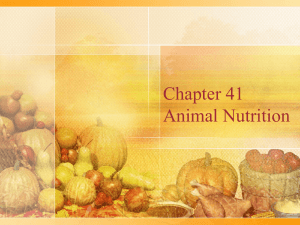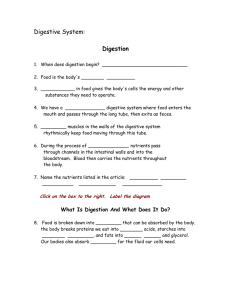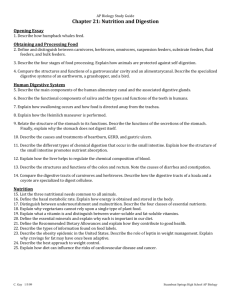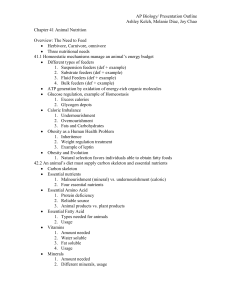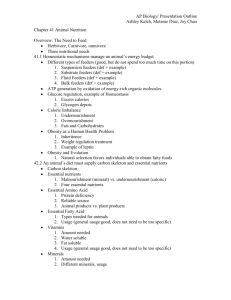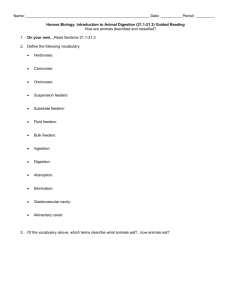10.1: Macromolecules and Essential Nutrients Definitions: Monosaccharides:
advertisement
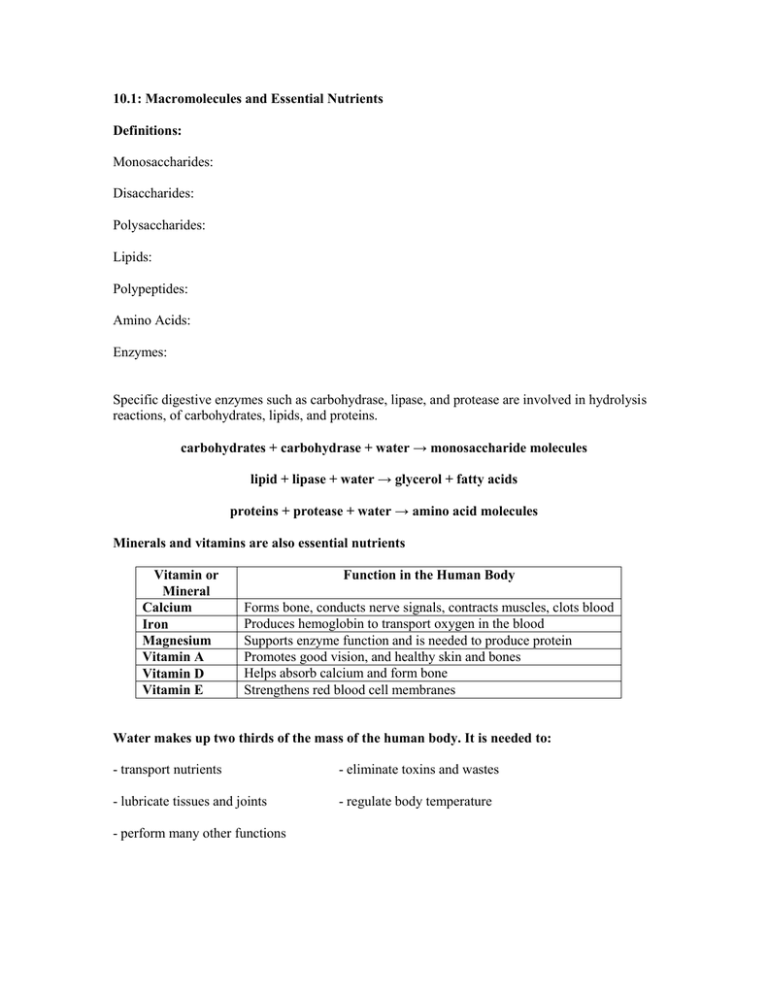
10.1: Macromolecules and Essential Nutrients Definitions: Monosaccharides: Disaccharides: Polysaccharides: Lipids: Polypeptides: Amino Acids: Enzymes: Specific digestive enzymes such as carbohydrase, lipase, and protease are involved in hydrolysis reactions, of carbohydrates, lipids, and proteins. carbohydrates + carbohydrase + water → monosaccharide molecules lipid + lipase + water → glycerol + fatty acids proteins + protease + water → amino acid molecules Minerals and vitamins are also essential nutrients Vitamin or Mineral Calcium Iron Magnesium Vitamin A Vitamin D Vitamin E Function in the Human Body Forms bone, conducts nerve signals, contracts muscles, clots blood Produces hemoglobin to transport oxygen in the blood Supports enzyme function and is needed to produce protein Promotes good vision, and healthy skin and bones Helps absorb calcium and form bone Strengthens red blood cell membranes Water makes up two thirds of the mass of the human body. It is needed to: - transport nutrients - eliminate toxins and wastes - lubricate tissues and joints - regulate body temperature - perform many other functions 10.1: Obtaining and Processing Food Heterotrophs use multiple methods of obtaining food: Filter Feeders – sponges, siphon water into their mouths and obtain small organisms to digest from the water. Substrate Feeders – earthworms, live on their food and eat their way through it. Fluid Feeders – spiders, suck or lick nutrient – rich liquids from plants or animals. Bulk Feeders – humans, ingest large pieces of food and break it down inside their bodies. Define: Alimentary Canal: Digesting Food in the Digestive Tract: Stage Event Food is taken in Ingestion Involves both physical (chewing) and chemical (enzymes) digestion Digestion Absorption Food is transported from the digestive system into the circulatory system Elimination Undigested solid waste matter is removed from the body Learning Check: 1. List three macromolecules nutrients, a key function each one performs in the body, and a food that each can be found in. [k/u] 2. What two things are needed in the body to break macromolecules down using hydrolysis? [k/u] 3. Imagine you are training for a race. [App] a) What nutrients would be important to consume in the weeks before the race? Why? b) What nutrients might you choose to consume just before the race or during the race? Why? 4. Identify each animal as either a; filter feeder, substrate feeder, liquid feeder, or a bulk feeder. [k/u] a) Dog: b) Snail: c) Clam: d) Honeybee: 5. Name the part(s) of the alimentary canal where each part of the digestive process occurs. [k/u] a) ingestion: b) digestion: c) absorption:

